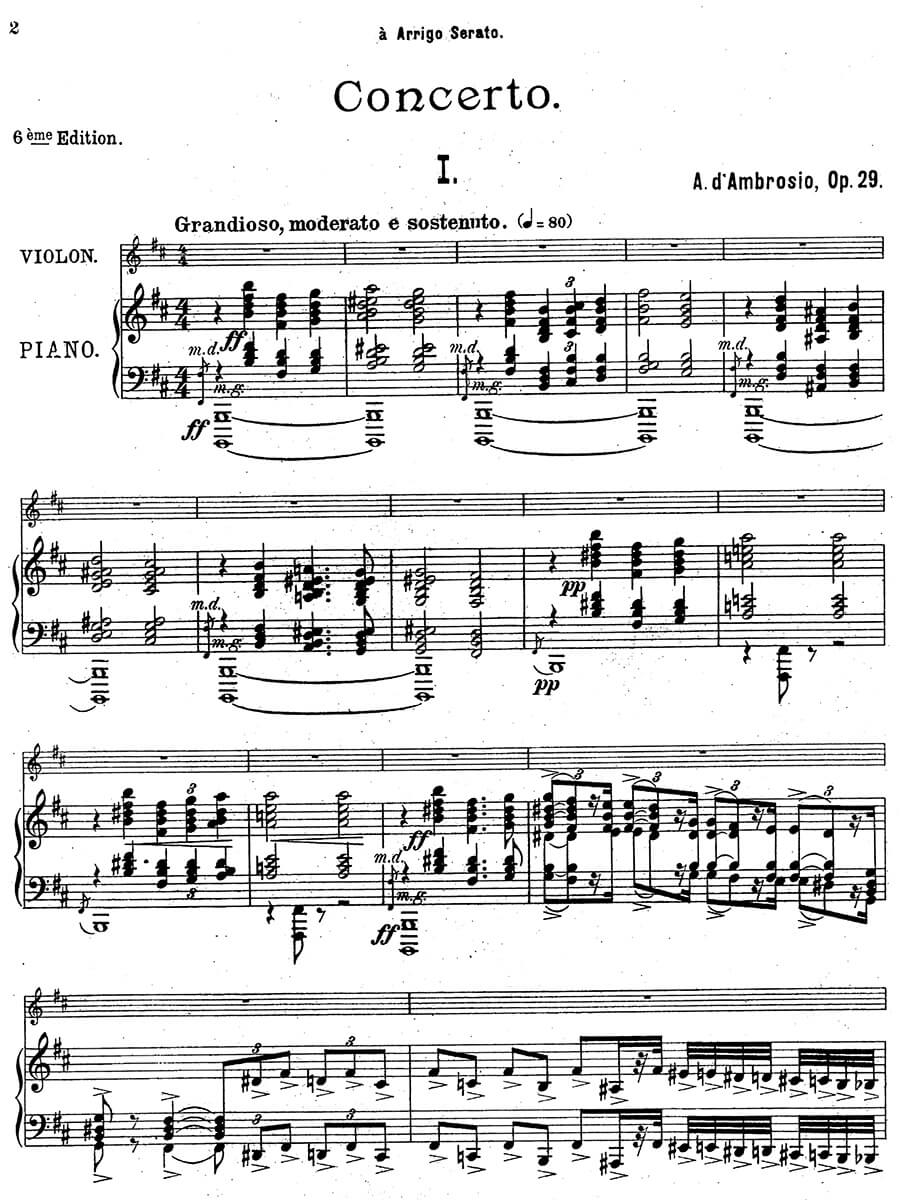Violin Concerto No.1 in B minor, Op.29 (Piano reduction 6 part)
Ambrosio, Alfredo d’
30,00 €
Ambrosio, Alfredo d’ – Violin Concerto No.1 in B minor, Op.29 (Piano reduction 6 part)
Comparatively little is known about the Neapolitan violinist and composer, Alfredo d’Ambrosio. Born on 13 June 1871, he enrolled at the Conservatorio di Musica San Pietro a Majella at Naples, where he was a pupil of the organist and composer, Marco Enrico Bossi. He later studied violin with Pablo de Sarasate at the Real Conservatorio Superior de Música de Madrid, and with August Wilhelmj at the Guildhall School of Music in London. On completing his studies, d’Ambrosio married Blanche Aida Malvano and they had three children: one, Violette d’Ambrosio, went on to develop a career as a violin virtuoso. The d’Ambrosio family first settled in Nice, then in Paris, where Alfredo was active as a performer, teacher, and occasional composer. He died there on 28 December 1914, aged 43.
During his short life, d’Ambrosio composed a substantial corpus of concert pieces for violin and piano, several chamber works, a ballet, an opera, and two violin concertos. His Violin Concerto no.1, Op.29, was composed between April and October 1903, and published at Nice by Paul Decourelle in 1904; a version for violin and piano appeared in the same year and ran to several subsequent editions. The first performance was given by the dedicatee, Arrigo Serato, at Berlin on 29 October 1904, with the Berliner Philharmoniker directed by August Scharrer. The concert was apparently attended by the Emperor, Wilhelm II.
The concerto is cast in three movements. The first movement (Grandioso, moderato e sostenuto – Moderato) is structured as a chain of variations on the theme presented at the outset by the orchestra, and which bears all the stylistic hallmarks of a canzone napoletana. The version of the theme presented by the solo violin (fig.2) is developed in parallel.
The end of the first movement leads without a break into the second (Andante: Lento), which opens with a simple theme in E major presented by the solo violin. Versions of the theme are passed around the orchestra (clarinet at fig.13, flutes at fig.16, tutti violins in fig.17, etc.), over and between virtuoso filagree from the solo violin. At fig.19, the flutes and clarinets present the theme again, this time above a saltarello-like rhythm in the lower strings; a brief climax leads into a fresh statement of the theme in the tonic by the solo violin (fig.20), with echoes of the saltarello in the French horns. A further repetition at fig.22 is accompanied by fragments derived from the opening subject of the first movement, and brings the slow movement to a gentle close….
For more information about the piece read the preface to the full score: > HERE
| Score Number | 4923b |
|---|---|
| Edition | Repertoire Explorer |
| Genre | Violin & Orchestra |
| Size | 225 x 320 mm |
| Printing | Reprint |
| Specifics | Piano Reduction & Solo Violin |
